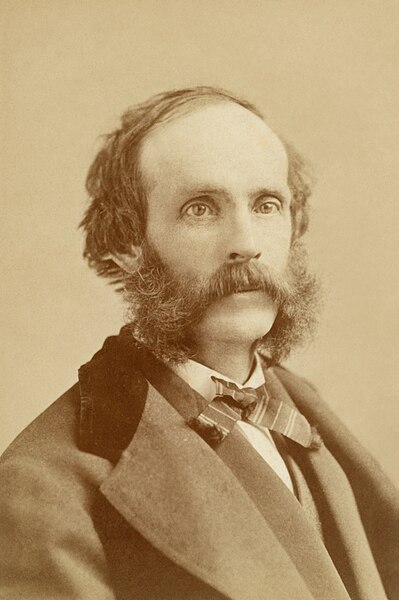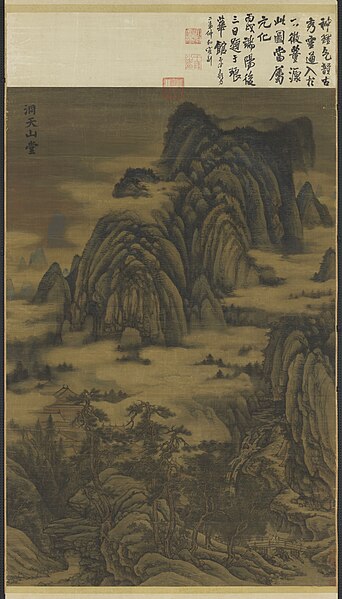Frederic Edwin Church was an American landscape painter born in Hartford, Connecticut. He was a central figure in the Hudson River School of American landscape painters, best known for painting large landscapes, often depicting mountains, waterfalls, and sunsets. Church's paintings put an emphasis on realistic detail, dramatic light, and panoramic views. He debuted some of his major works in single-painting exhibitions to a paying and often enthralled audience in New York City. In his prime, he was one of the most famous painters in the United States.
c. 1868 photograph by Napoleon Sarony
The Heart of the Andes (1859)
Cotopaxi (1862)
Tropical Scenery (1873)
Landscape painting, also known as landscape art, is the depiction of natural scenery such as mountains, valleys, trees, rivers, and forests, especially where the main subject is a wide view—with its elements arranged into a coherent composition. In other works, landscape backgrounds for figures can still form an important part of the work. Sky is almost always included in the view, and weather is often an element of the composition. Detailed landscapes as a distinct subject are not found in all artistic traditions, and develop when there is already a sophisticated tradition of representing other subjects.
Joachim Patinir (1480–1524), Landscape with Charon Crossing the Styx, 1515–1524. Patinir pioneered the "world landscape" style.
Themistokles von Eckenbrecher (German, 1842–1921), View of Lærdalsøyri, on the Sognefjord, 1901
Dong Yuan (934–962) Dongtian Mountain Hall (Chinese: 洞天山堂圖). 10th century, the Five Dynasties (Chinese). National Palace Museum, Taipei.
Landscape with scene from the Odyssey, Rome, c. 60–40 BCE








